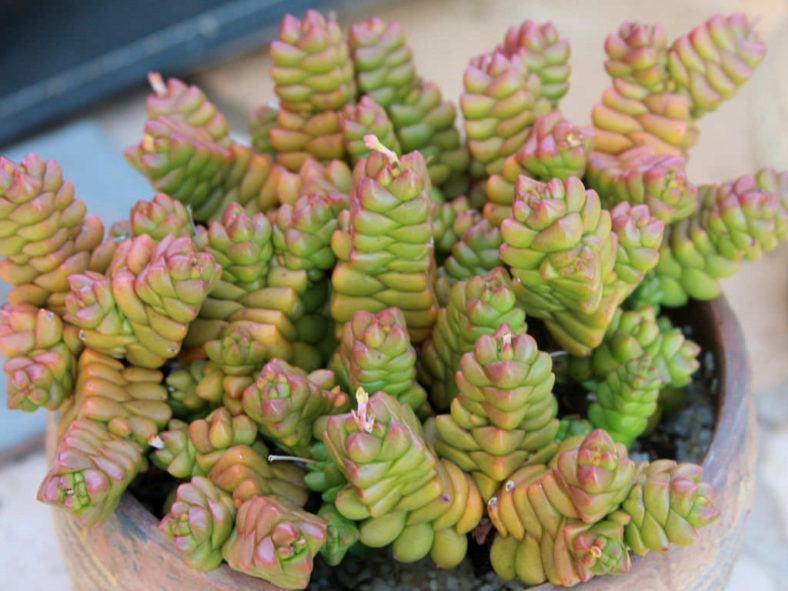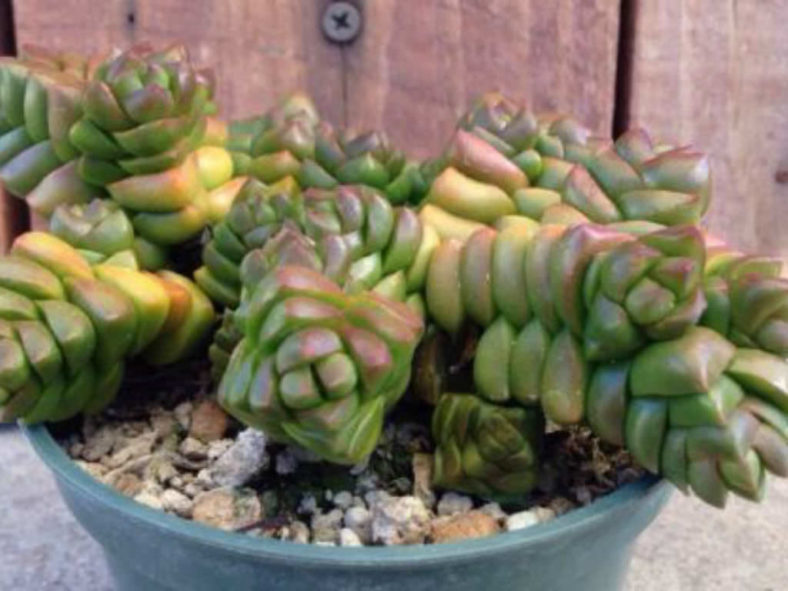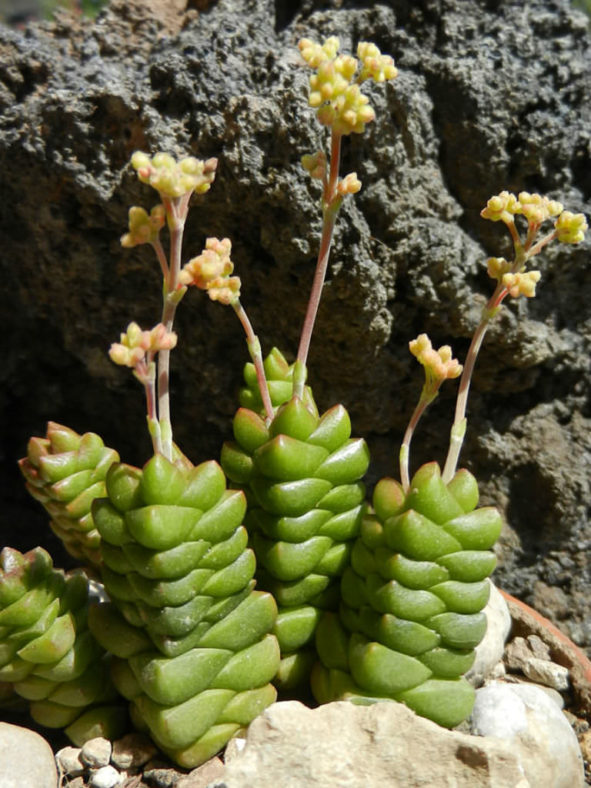Scientific Name
Crassula marchandii Friedrich
Synonym(s)
Crassula ×marchandii, Crassula otzenii
Scientific Classification
Family: Crassulaceae
Subfamily: Crassuloideae
Genus: Crassula
Etymology
The specific epithet "marchandii" (pronounced "mar-SHAHN-dee-eye") honors G. Marchand, who was curator of the Crassula collection of Julien Marnier-Lapostolle at Les Cèdres, France.
Origin
Crassula marchandii is an insufficiently known species native to South Africa (Vanrhynsdorp, Western Cape). Some experts believe it is a natural hybrid that results from a cross between Crassula grisea and Crassula plegmatoides.
Description
Crassula marchandii is an attractive succulent with smooth, shiny leaves arranged in a square column formation. It can grow up to 5 inches (12.5 cm) tall. The leaves are deep green to dark maroon, depending on the amount of sun or cold they receive. They are barely rounded and can reach up to 1.2 inches (3 cm) in length.
The plant produces inconspicuous grayish-green flowers.

Hybrids of Crassula marchandii
Hardiness: USDA hardiness zones 9b to 11b: from 25°F (-3.9°C) to 50°F (10°C).
How to Grow and Care for Crassula marchandii
Crassulas are easy to grow but susceptible to mealybugs and fungal diseases. Overwatering is sure to be fatal, as with all succulents, so err on the side of being too dry rather than too wet. Never let your plant sit in water. If you water from beneath by allowing the plant to sit in a saucer, pour off any excess water after a few minutes.
These succulents are generally started by division, offsets, or leaf cuttings. Crassulas can be easily propagated from a single leaf. Sprout leaves by placing them into a potting mix for succulents, then cover the dish until they sprout.
Repot as needed, preferably during the warm season. To repot your Crassula, ensure the soil is dry before repotting, then gently remove the pot. Knock away the old soil from the roots, removing any rotted or dead roots. Treat any cuts with a fungicide. Place the plant in its new pot and backfill it with potting soil, spreading the roots as you repot. Leave the plant dry for a week or so, then begin to water lightly to reduce the risk of root rot.
Learn more in "How to Grow and Care for Crassula."
Links
- Back to genus Crassula
- Succupedia: Browse succulents by Scientific Name, Common Name, Genus, Family, USDA Hardiness Zone, Origin, or cacti by Genus
Photo Gallery
Click on a photo to see a larger version.


